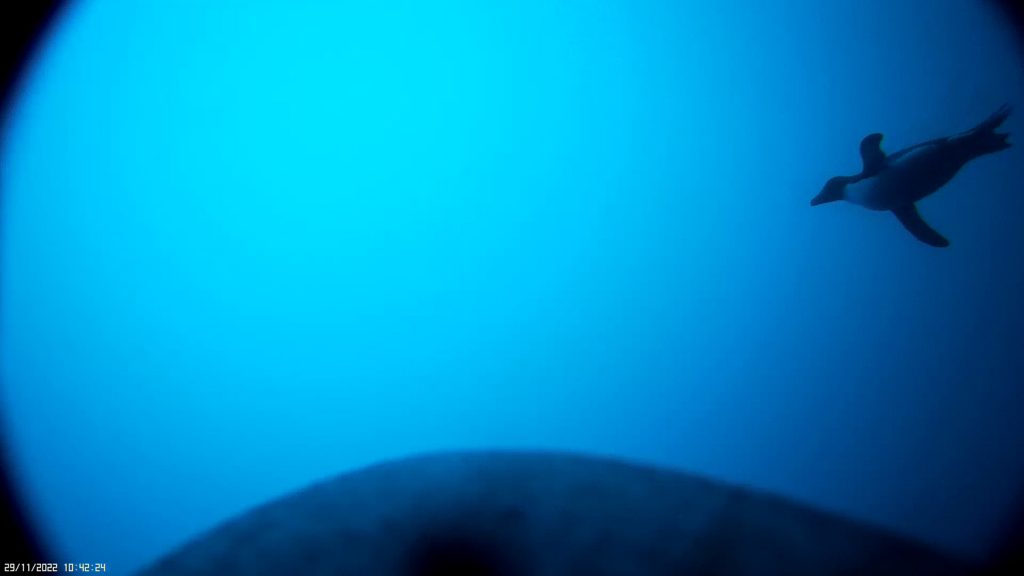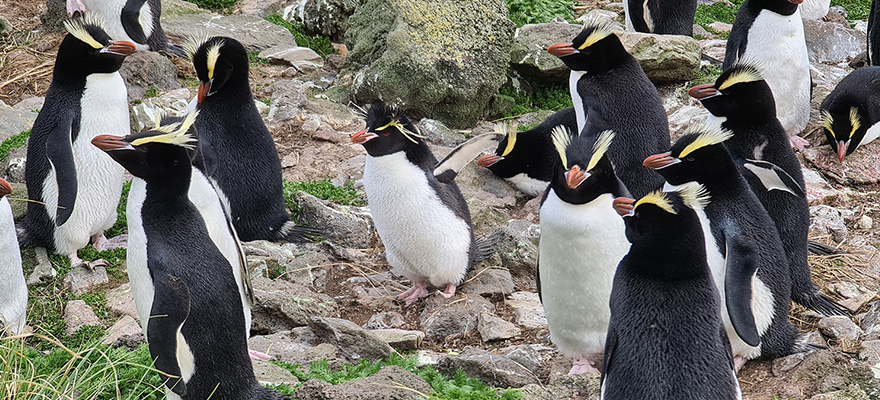Day 22 – Southwards
Overcast start of the day. We fire up the generator to continue charging all the drone batteries. Hannah and I will head to the south coast for an overnight stay. The plan is to drone the major regions, South Bay, South Bay West, and South Coast West. We will need all the batteries we have which will add to the weight of our packs. I decide against taking the rotary hammer to install a time lapse camera, too heavy. We pack some noodles, wraps and soups and are off at 11.15 am.
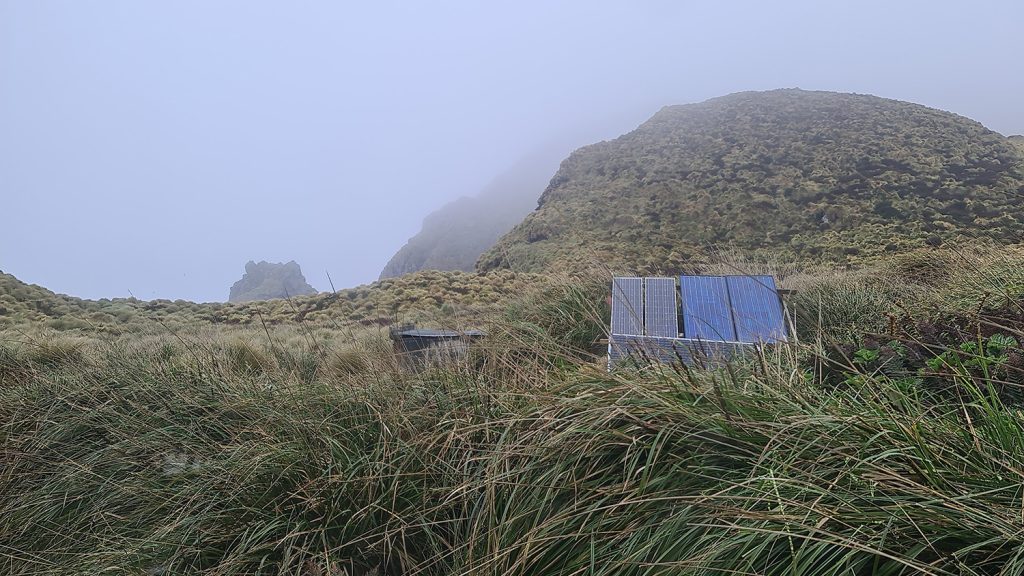
The rest of the crew will remain at the hut and recover devices. One of the two camera logger birds has left in the morning, the second one is still sitting on the chick. I instruct Jeff to change the camera delay if the bird does not leave before lunch.
Dave joins us to the northern plains to check on the tracking tunnels. Then the two of us start walking towards the slip that will bring us to the top of Mt. Galloway. The ascent is a tough bit of work but the slip does make it a lot easier. Not much than an hour after we left the hut we reach the summit of the highest mountain on the island. We follow the summit ridge east, past a small nesting colony if giant petrels that abandon the fluffy chicks as soon as the see us. Real heroes. The Antipodean albatross chicks are less panicky. If we get too close they stand up and clap their beaks at us.
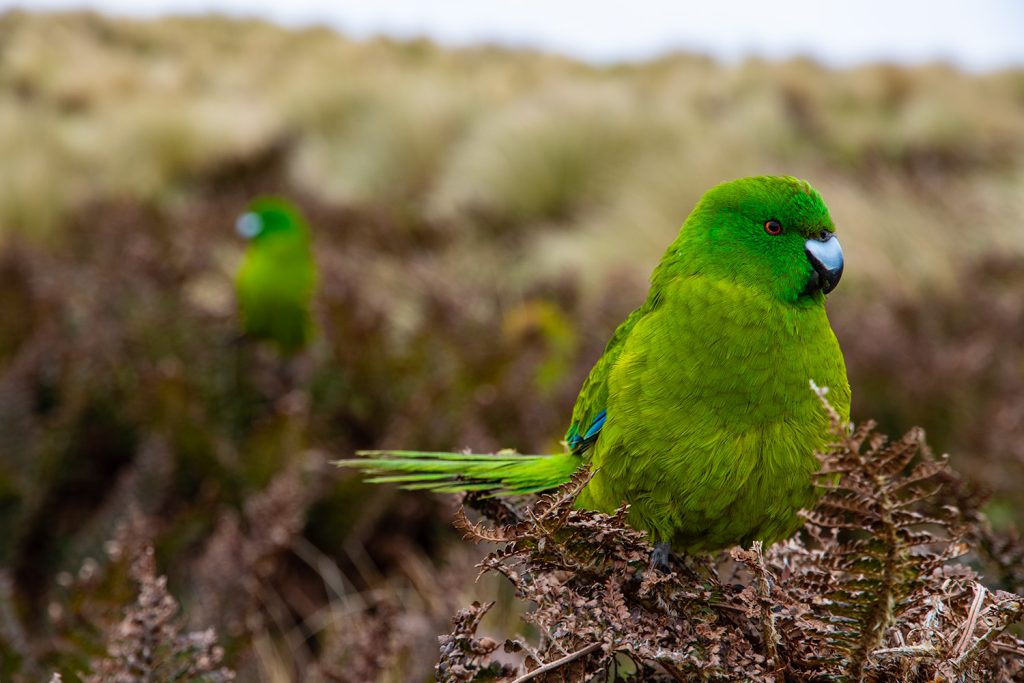
Around 1.30pm we have crossed the central plains and the lower ranges of Mt. Waterhouse and begin descending on to the southern plateau with the Reliance Ridge ahead of us. We keep zigzagging our way down to avoid patches of brown fern that are a nightmare to walk through. Half way down the slope, we drop our packs and have lunch. We’re both panting as the ascent and the walk across has drained our energy reserves considerably. The saddle west of the Reliance Ridge looks like it’s pretty far away. Albatross are zooming across the plateau. Parakeets come to check us out while we’re eating our lunches. It’s still overcast and grey when we carry on.
We reach the saddle around 2.30pm and look down to the south coast. We already hear the din of the penguin colonies that stretch out in bizarre shapes in the fern-tussock landscape below us. The descent is pretty steep. We follow a creek halfway down the slope before we can see the tent Robin & Jeff pitched a few days ago. The closer we get to the tent, the tougher is gets to walk. The impenetrable ferns are at times shoulder high, and jumping from wobbly tussock bulb to wobbly tussock bulb is wearing us out. The mist has finally cleared and the sun is out. It gets really hot. We reach the tent pitched behind a wall of ferns on incredibly uneven ground around 3.15pm. We’re pretty exhausted.
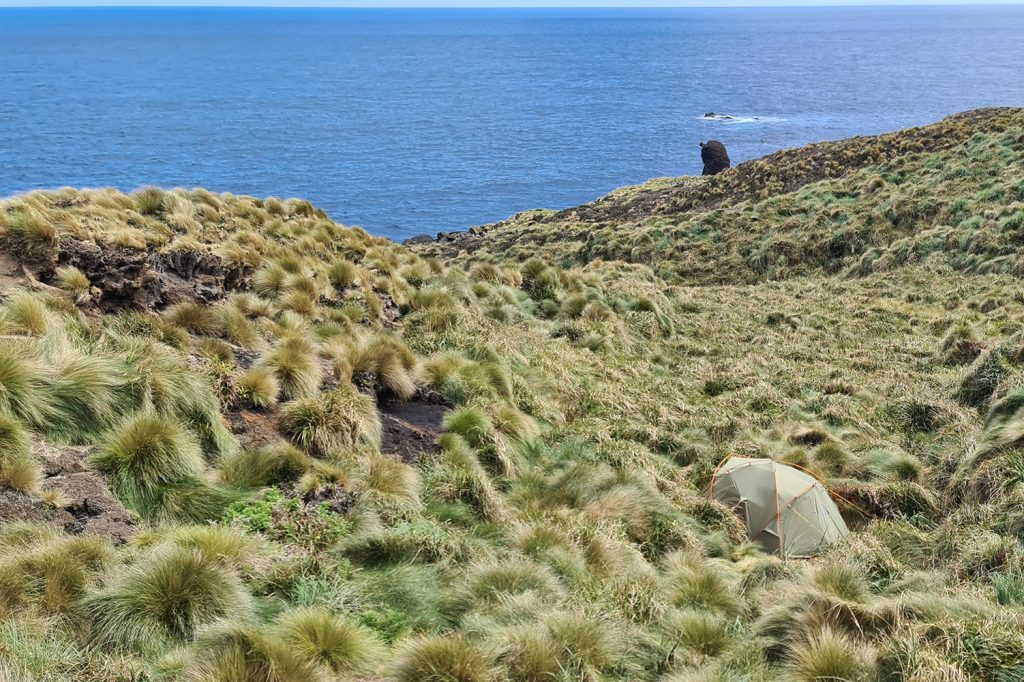
At 4 pm we battled our way through the ferns towards a large penguin colony. The birds do not seem very happy about us being there and squawk at us which sets a cascade of squawking in motion that ripples through the top of the colony. The noise is ear splitting. We climb to the top of a rock and get ready to drone.
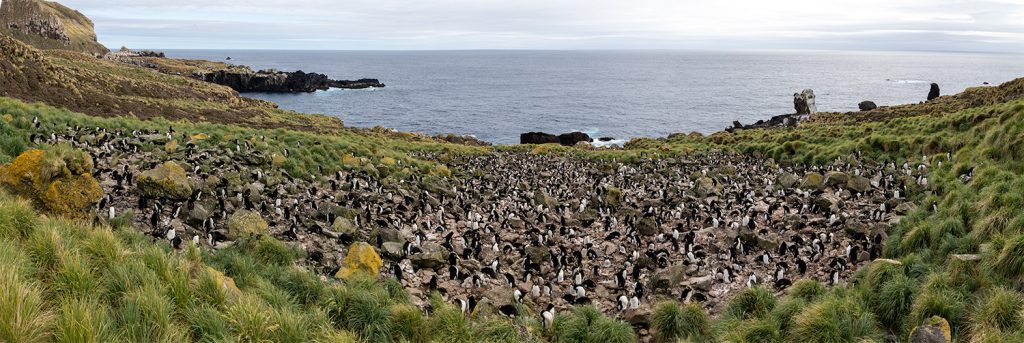
Again we have to fly manually as the Drone Deploy app has not cached the underlying satellite map making it impossible to adjust the missions. Drat. The penguin colonies meander through the fern vegetation in bizarre geometric shapes, like another form of crop circles. The different colony patches are all interconnected by paths through tall grass or even narrow bands of nests. By 6pm we have flown several manual missions ranging from 120m flight altitudes to 20m above the different colony patches which are all situated at different elevations above sea level.
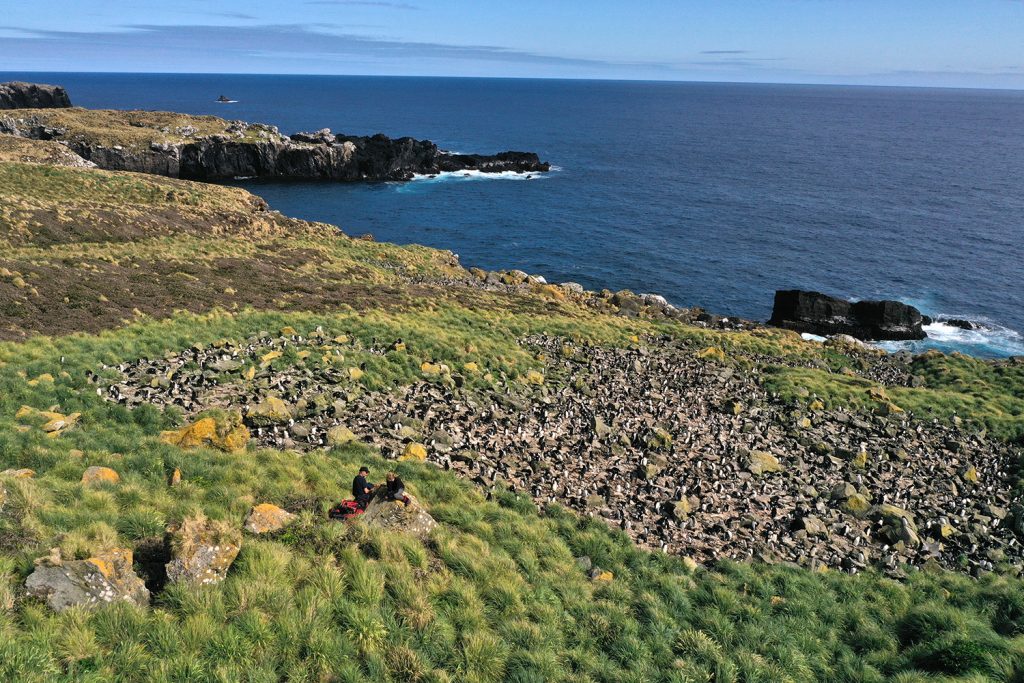
After packing up the drone, we watch the going ins in the colony for a while. A lone Rockhopper penguin maybe two thirds the size of the Erect-crested penguins around him stands is ground and calls confidently to attract a mate. None of the larger penguins take note.
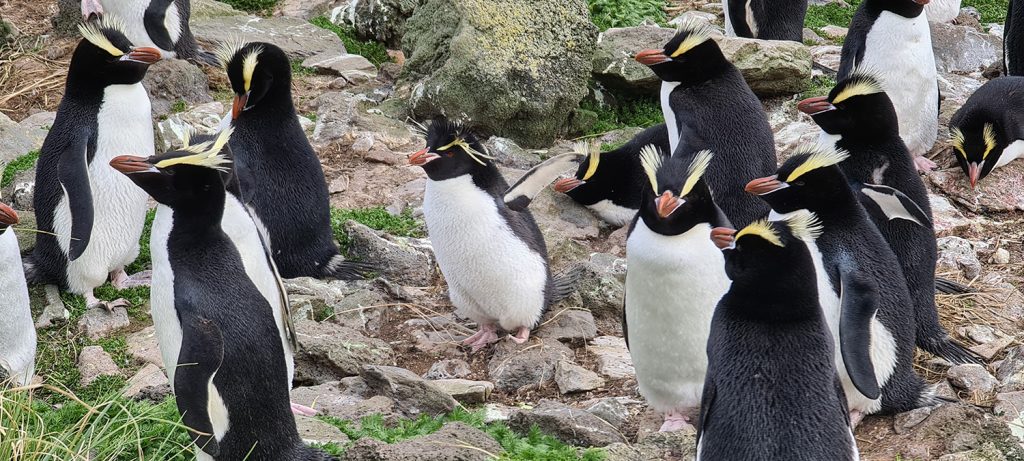
We have some Risotto and noodle soup for dinner around 7pm when it starts to rain. We spent an hour inside the tent trying to fill the dimples in the floor with everything we have to make a somewhat even ground to sleep on. We are surprisingly successful.
At the hut, the team managed to recover the first camera logger while the second bird did not leave all day forcing Robin and Jeff to reprogram that device via Bluetooth several times. Jeff downloads the data from the recovered camera and the team watches how our bird catches krill in the clear blue waters of the Subantarctic with awe.
